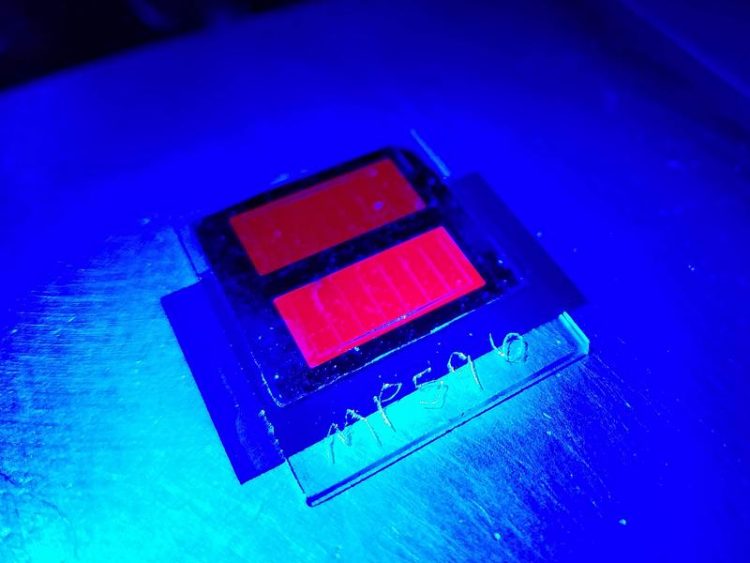Mechanically stacked GaInP/GGaInP/GaAs- and Si Solar Cell Reaches 35.4% Efficiency

Mechanically stacked GaInP/GaAs//Si triple-junction solar cell with 35.4% conversion efficiency. M. Schnabel, NREL
A cooperation of the Institute for Solar Energy Research Hamelin (ISFH) and the National Renewable Energy Laboratory (NREL) reaches a certified one-sun energy conversion efficiency of 35.4% with a mechanically stacked GaInP/GaAs//Si triple-junction solar cell.
While the Si bottom cell with POLO (poly-silicon on oxide) passivating contacts was fabricated at ISFH the monolithic GaInP/GaAs top cell was fabricated at NREL.
This excellent efficiency is second-highest after and close to the current world record of 35.9% for III-V/Si tandem cells. The specialty here is that the Si bottom cell is optimized for converting the full one-sun solar spectrum. On its own the efficiency of this type of Si wafer cells with POLO junctions reaches 25%.
Thus the addition of the GaInP/GaAs top cell yields a total efficiency improvement of about 10%abs. The efficiency of the GaInP/GaAs//Si cell is even close to the current world record of 37.9% for a non-Si triple-junction cell. This shows that silicon wafer cells, which provide the mature and cheap basis for over 90% of today’s photovoltaic (PV) devices, are well suited for tandem applications.
In order to keep cell interconnection on module level simple, a purely monolithic tandem device would be desirable. When mimicking this scenario by a two-terminal measurement, the efficiency of the GaInP/GaAs//Si cell is 31.1%.
While this is still an excellent value, there is a gap of 4.3% to the measurement without current-constraint. This difference is a consequence of the need of current matching, which is a principle challenge for two-terminal devices regardless of the top cell absorber material (perovskites, III-Vs, …).
A promising approach to avoid this constraint even for monolithic devices is to use a POLO IBC (interdigitated back contact) cell with front base contact as bottom cell. The rear base contact works as a third terminal, which supplies missing or extracts surplus carriers.
Further insights into this concept will be presented in a plenary talk authored by ISFH and NREL at the upcoming European Photovoltaic Solar Energy Conference and Exhibition in Amsterdam.
For ISFH, the remarkable efficiency of 35.4% is a nice birthday present for its 30th anniversary, which will be celebrated in Emmerthal on August 31st 2017.
Since 30 years ISFH is in close and fruitful cooperation with industrial and academic partners, contributing with research to the progress in solar energy, one of the most important technologies for a clean and save future of the earth.
Media Contact
More Information:
http://www.isfh.de/All latest news from the category: Power and Electrical Engineering
This topic covers issues related to energy generation, conversion, transportation and consumption and how the industry is addressing the challenge of energy efficiency in general.
innovations-report provides in-depth and informative reports and articles on subjects ranging from wind energy, fuel cell technology, solar energy, geothermal energy, petroleum, gas, nuclear engineering, alternative energy and energy efficiency to fusion, hydrogen and superconductor technologies.
Newest articles

First-of-its-kind study uses remote sensing to monitor plastic debris in rivers and lakes
Remote sensing creates a cost-effective solution to monitoring plastic pollution. A first-of-its-kind study from researchers at the University of Minnesota Twin Cities shows how remote sensing can help monitor and…

Laser-based artificial neuron mimics nerve cell functions at lightning speed
With a processing speed a billion times faster than nature, chip-based laser neuron could help advance AI tasks such as pattern recognition and sequence prediction. Researchers have developed a laser-based…

Optimising the processing of plastic waste
Just one look in the yellow bin reveals a colourful jumble of different types of plastic. However, the purer and more uniform plastic waste is, the easier it is to…



